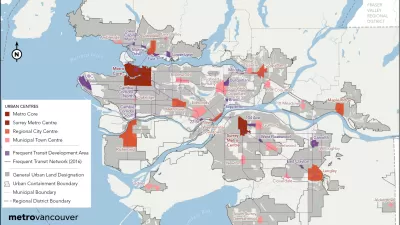A 20-year, voluntary, bottom-up, large-scale, long-term planning effort in Utah has managed to bridge the divide between Mormons and non-Mormons, environmentalists and mining interests, farmers and city-dwellers.

Collin Woodward, a contributing editor with Politico Magazine and author of five books, writes about the 20-year land use planning effort undertaken in the state of Utah. The effort was intended to conserve water use, promote clean air and avoid the destruction of open spaces by slashing housing lot sizes, encouraging higher-density development, and imposing new taxes to build a light rail network and commuter rail system from scratch.
Using a "voluntary, bottom-up, large-scale and long-term—has clicked with the people of a conservative state and bridged historic divisions between Mormons and non-Mormons, environmentalists and mining interests, farmers and city-dwellers. And it came out of an unlikely gathering 30 years ago. Some of the most influential figures in a staid and recession-shocked state came together at a dude ranch owned by the man who was the model for American fiction’s most famous bulldozer-destroying environmental activist."
Growth continues in Utah, writes Woodward: "[T]he challenge ahead is daunting. Last month, the Census Bureau revealed Utah was the fastest growing state in the country, and the majority of the growth is due to its people having the nation’s highest birth rate. Projections show Utah will nearly double its population to 5.4 million by 2050, further compounding the challenge of maintaining the quality of life its people treasure. So in 2013, current Governor Gary Herbert asked Envision Utah to do their magic again, only this time working statewide to determine what Utahns want the place to look like at mid-century."
FULL STORY: How Mormon Principles and Grassroots Ideals Saved Utah

Planetizen Federal Action Tracker
A weekly monitor of how Trump’s orders and actions are impacting planners and planning in America.

Congressman Proposes Bill to Rename DC Metro “Trump Train”
The Make Autorail Great Again Act would withhold federal funding to the system until the Washington Metropolitan Area Transit Authority (WMATA), rebrands as the Washington Metropolitan Authority for Greater Access (WMAGA).

The Simple Legislative Tool Transforming Vacant Downtowns
In California, Michigan and Georgia, an easy win is bringing dollars — and delight — back to city centers.

The States Losing Rural Delivery Rooms at an Alarming Pace
In some states, as few as 9% of rural hospitals still deliver babies. As a result, rising pre-term births, no adequate pre-term care and "harrowing" close calls are a growing reality.

The Small South Asian Republic Going all in on EVs
Thanks to one simple policy change less than five years ago, 65% of new cars in this Himalayan country are now electric.

DC Backpedals on Bike Lane Protection, Swaps Barriers for Paint
Citing aesthetic concerns, the city is removing the concrete barriers and flexposts that once separated Arizona Avenue cyclists from motor vehicles.
Urban Design for Planners 1: Software Tools
This six-course series explores essential urban design concepts using open source software and equips planners with the tools they need to participate fully in the urban design process.
Planning for Universal Design
Learn the tools for implementing Universal Design in planning regulations.
Smith Gee Studio
City of Charlotte
City of Camden Redevelopment Agency
City of Astoria
Transportation Research & Education Center (TREC) at Portland State University
US High Speed Rail Association
City of Camden Redevelopment Agency
Municipality of Princeton (NJ)




























